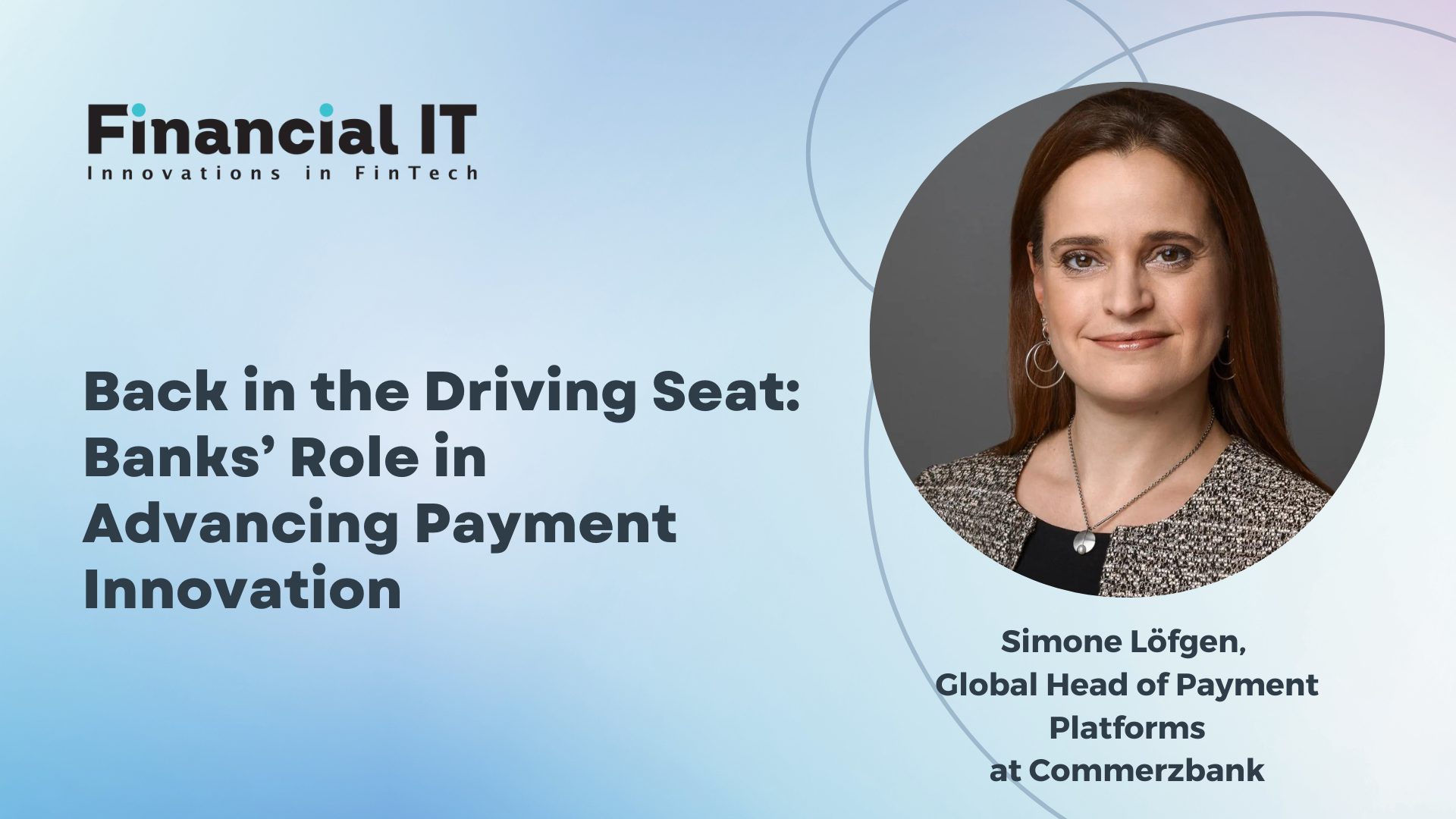Back in the Driving Seat: Banks’ Role in Advancing Payment Innovation

- Simone Löfgen, Global Head of Payment Platforms at Commerzbank
- 16.08.2024 10:30 am #PaymentInnovation #BanksRole
The payments sector has always been fast-moving, and it has always served as a sandbox for innovation that has then gone on to influence the rest of the financial sector. This has certainly not changed – if anything, the speed of innovation is only increasing.
During the pandemic, as consumer behaviour shifted dramatically, payment behaviour adjusted accordingly. Now that we can look back with some perspective, there is no doubt that it accelerated existing trends in e-commerce and payment digitalisation – e.g. global retail e-commerce sales jumped by 27.6% in 2020.
But the rapid rise of e-commerce has, over the past few years, placed traditional banks to a certain extent on the back foot. Non-traditional payment methods – using Amazon, PayPal, ApplePay, Google or other intermediaries – became more and more popular.
With instant payments, banks are responding, making themselves better equipped and more relevant for the e-commerce age. Significant progress has been made in countries across the globe from a domestic payments perspective. But the true goal for banks has been the widescale application of instant (or real-time) capabilities to cross-border payments.
Supportive regulation and standards are crucial for innovation
Innovation within payments is not driven solely by technology – regulations and standards also shape the agenda. Achieving instant cross-border payments is a major goal at the heart of the G20 Roadmap, an important international initiative to address the challenges often associated with international money transfers.
The migration to ISO 20022, for example, was an important step towards making payment systems interoperable – which is critical if the industry is to leverage domestic instant payment systems as a way of enabling instant cross-border payments. The fact that the transition is going smoothly so far is testament to the great efforts made by banks in preparing for it.
More generally supportive regulation has also been introduced. Upcoming legislation from the European Commission, which is designed to complement the Eurosystem’s broader retail payments strategy, signals that the market will gradually move towards making instant payment solutions mandatory. In the Eurozone, about 14% of SEPA credit transfers are currently instant. Once this regulation comes into play, an increase to between 40% and 50% seems possible as instant payments tend to become the new normal.
Another major benefit of ISO 20022 is the range of new analytical tools that it enables. The bulk of banks’ data comes from payments – and with high quantities of enriched, structured data, banks can create new forms of analyses. Cashflow projections and trend analyses, to name a few, could be more granular and accurate, providing new insights for corporate clients.
These data tools can also be put to work to support the rollout of instant payments. Currently, one of the big challenges with real-time payments relates to fraud risks. Unlike a regular credit transfer where banks have hours to stop a payment if they suspect wrongdoing, with instant payments there is no time to stop a transaction once it has been processed. Fraud checks also need to become just as instant as the payment is. Advanced analytical tools, which can detect patterns of suspicious behaviour using large datasets, will be a crucial part of the solution.
Banks continue to explore the possibilities of digital currencies
Another way that banks are looking to drive forward innovation is through distributed ledger technology – where again we see the intersection of the technological, the regulatory and the financial spheres. As adoption becomes more mainstream, we see both central and commercial banks increasingly explore the possibilities of creating their own digital currencies. This is, of course, not only a response to the increasing dominance of credit card providers and digital behemoths, but a solution to pre-empt the ongoing cultural shift towards a cashless society.
But with so many technological options, it is still unclear which whether consensus will emerge in the sector on how – or whether – banks will develop their own digital tokens. Should every major bank have its own stablecoin, a form of cryptocurrency whose value is tied to a stable asset? How much investment would this take to realise? Or will central bank digital currencies (CBDCs), such as a digital euro lead by the European Central Bank, become the main standard to be embraced by other institutions?
Under current proposals for a digital euro, individual consumers would have a digital wallet on their device to store this new form of money. It could conceivably either be a standalone application or be integrated into each commercial bank’s ecosystem – which would give customers the choice to pay for any given purchase with their traditional accounts, or their wallet. In this respect, a digital euro would replace cash, rather than commercial bank money.
While the precise form is yet unclear and the preparation phase is currently ongoing, it is certain is that there is potential for tokenised money to play a role in payments going forward. And whether by defining a new role for digital currencies or by pioneering instant cross-border payments, banks will be in the driving seat of innovation – showing that they can be every bit as forward-looking as their fintech counterparts.



















